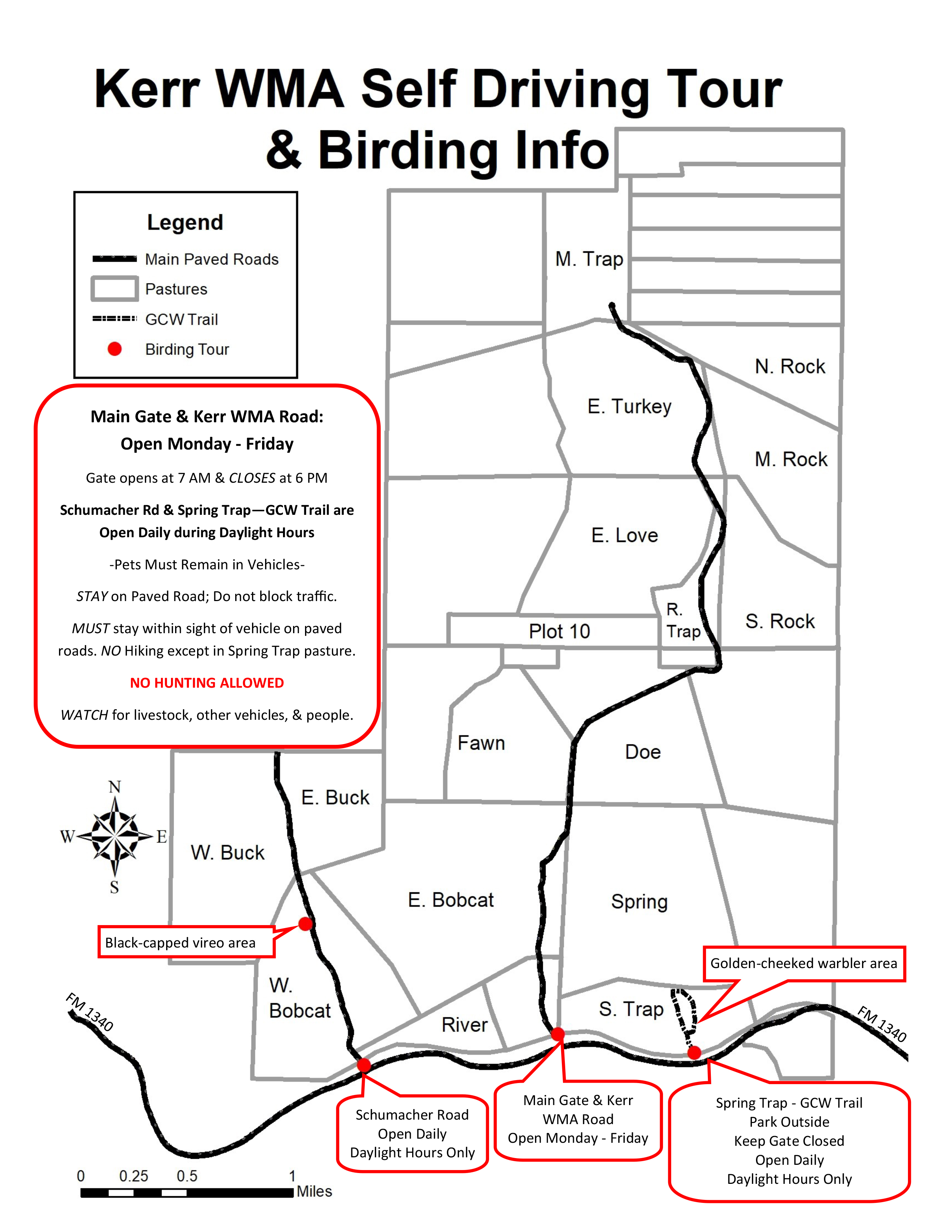Kerr WMA: Research
Phone: (830) 238-4483
Address:
2625 FM 1340
Hunt, TX 78024
Contact:
Ryan Reitz
Dates Open:
Public access is open year round (see map for details), except closed for Special Permit hunts. Hunting is not allowed on the WMA except through Public Drawn System hunts. The office is open Monday through Friday, 8:00 am to 5:00 pm.
May 1 2025 Road work is underway on the Kerr WMA main road. Traffic is reduced to one lane, hiking and biking are not allowed in this location. Please proceed with caution. Visitors are encouraged to utilize Schumacher Road and Spring trap -GCW trail, open during daylight hours.
Kerr WMA Driving Tour & Birding Map:
Events
Seminars and tours are annually hosted on the Kerr Wildlife Management Area (WMA).
Seminars include information on historical accounts of the Texas Hill Country and the Kerr WMA along with ecosystems management information using a holistic approach to land improvement. They also cover a summary of past and present deer research, over 40 years, from the Donnie E. Harmel White-tailed Deer Research Facility; an update on the status of feral hogs; a look at different management techniques for deer and general wildlife and an overview of TPWD programs that are available to assist landowners. We also offer a field tour of the WMA and the research facilities.
Please contact the Kerr WMA headquarters by calling (830) 238-4483 for more information and registration.
Research
Research and Management
Research and management go hand in hand. Many WMAs, such as the Kerr WMA, serve as research sites for conducting investigations and evaluating adaptive management processes. WMAs are active in both the evaluation (research) and the application (management) process while demonstrating results and relationships to management goals. The only way we can be sure that we are using the best techniques in wildlife management is to apply them and then evaluate the results to determine if they meet objectives. We also must conduct wildlife studies in order to gain a better understanding of the species that we are trying to manage. Serving in the Conservation community, some of our current knowledge was obtained from the research of other entities, but much of our management is based on research conducted by TPWD on our own WMAs, improving our understanding of range and wildlife management principles. With the continued development of new ideas and advancements in technology, there will always be a need for research to meet conservation challenges.
White-tailed Deer
Donnie Harmel White-tailed Deer Research Facility
Exotic Invasives
Non-Game/Endangered Species
Non-Game and T&E Research/Monitoring
